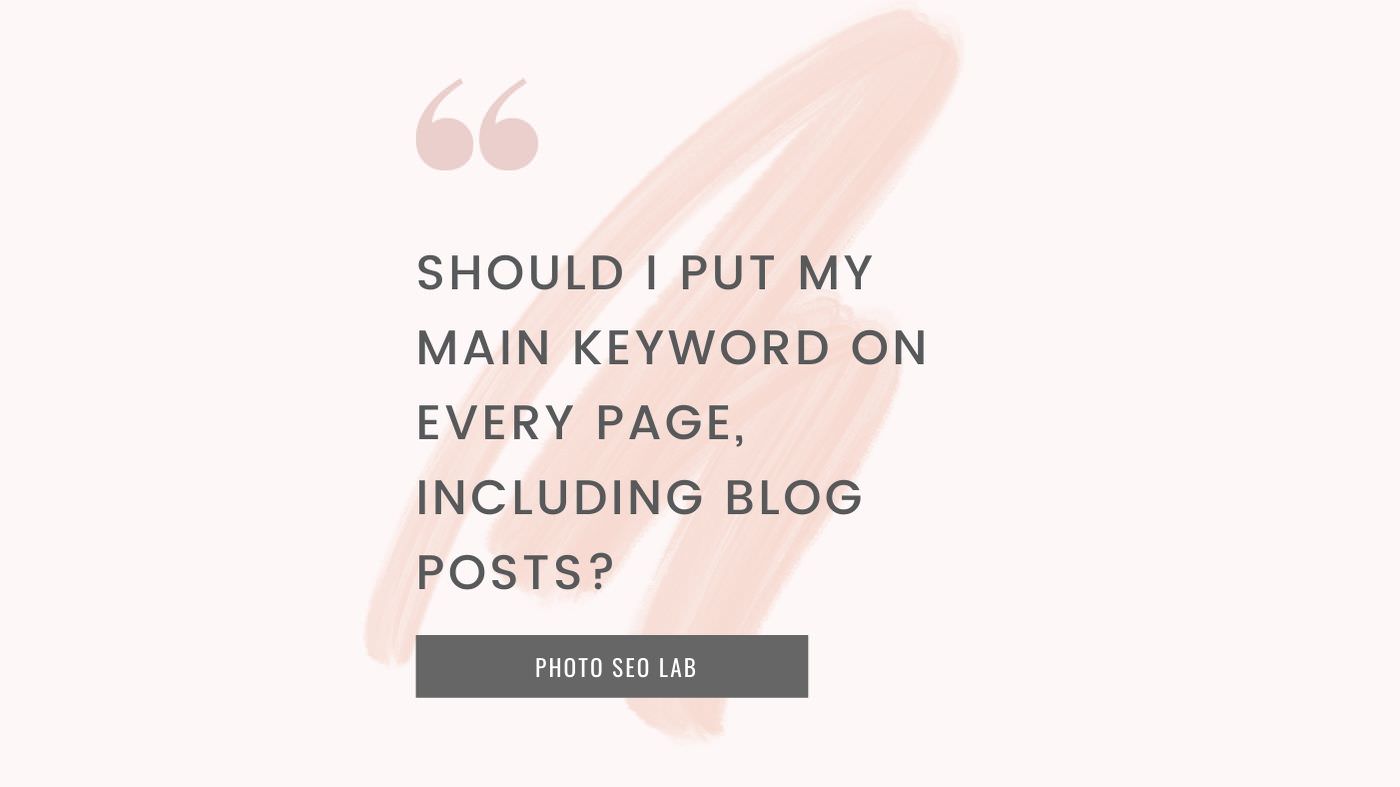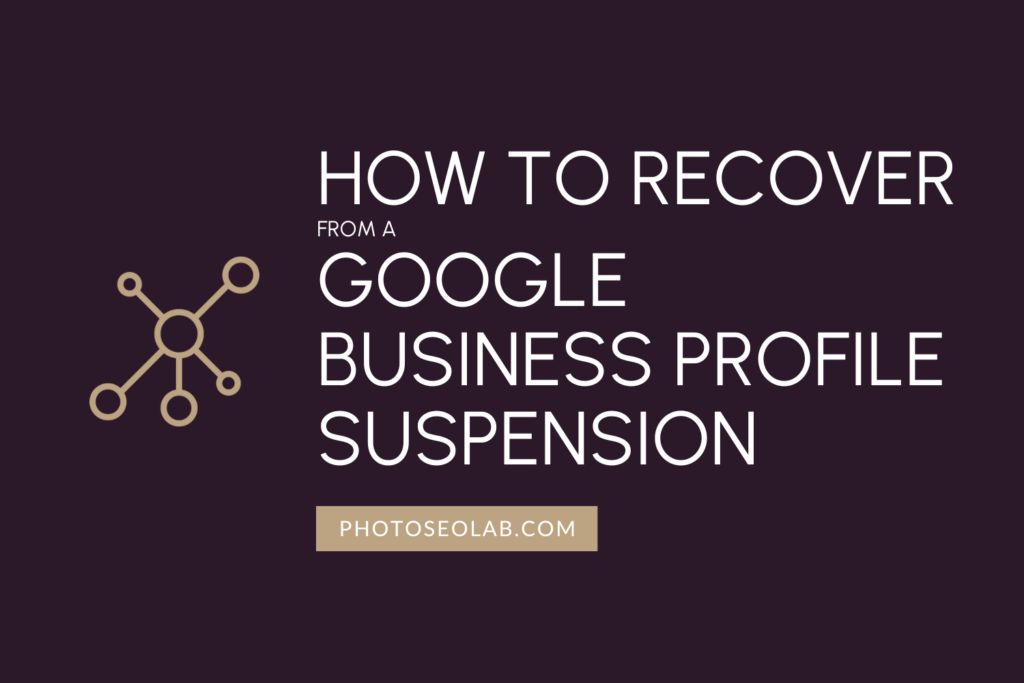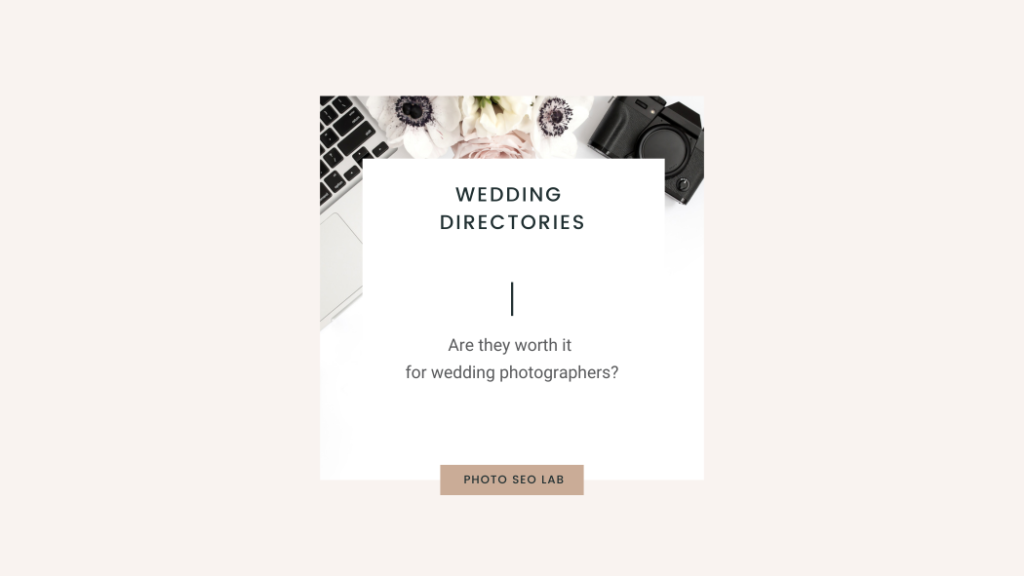I perform SEO audits on many photographers websites, and often see the same main keyword mistakes over and over.
I’m often asked about how main keywords should be used, and seeing these used incorrectly is something I see regularly. So I thought I’d pop a mini-guide together that answers the question ‘Should I put my main keyword on every page, including blog posts?’, as well as talk about other on-page optimisation mistakes that I see photographers making.
The short answer is no. Please don’t do this!
Read on to learn why…
Here’s a quote from a SEMRush article from 2016 that explains it. I’d highly recommend checking out this article, it’s packed with awesome content that will help you with on-page optimisation.

‘First of all, by having duplicate content on your website, you will lose your capability to choose which page you want to rank for. Search engines won’t know which pages you want to be considered landing pages in SERPs, and those pages can even start to compete with one another. Second, search engines are specifically designed to make the web a better place for users; valuable, unique content is highly appreciated by both search engines and users.
https://www.semrush.com/blog/semrush-study-on-site-seo-issues/
Main Keyword Best Practice Mini Guide

- Decide on your main keyword using keyword research. (Check out this keyword research tools article to help.)
- Ensure your homepage contains content that is relevant to this main keyword. You should use topically relevant words and phrases in a natural way that is designed for a human, not a robot.
- Feel free to use your main keyword in the titles of core pages if you feel it would be useful to the user. The emphasis should be on clarity. What are your core pages? Users should not have to guess!
- It’s ok to use your main keyword in the footer of your website. Do not include long lists of every variation or a long list of areas or venues.
- Alt text – Describe your photos using descriptive words that would make sense to a user. You do not need to include your main keyword in alt text unless it’s relevant. Do not copy and paste it into each photo.
Blog Post Titles
Now that we know your main keyword should not be used in every blog posts, what do you put in your blog posts titles instead?
The aim should be to create descriptive titles that make sense for whatever the subject of the individual post is.
If every blog post was optimised for one main keyword, in addition to the problems described above, the reach would be pretty limited.
It would be like fishing with a rod instead of a net.
By comparison – optimising 100 different blog posts for 100 different things is going to result in considerably more traffic.
The aim of your blog should be creating great quality content that’s suitable for potential clients at various points in the buying cycle, and you simply cannot do that with one single keyword phrase.
Do keyword research, and mix it up!
I’ll create an article in future that goes into a bit more depth about blog post title best practice.
Main Keyword Mistake FAQs
The short answer is no. When you optimise every page and post for the one thing, other than it looking truly awful and spammy to users, you risk losing control of which page or post is shown. I’ve seen many examples of this where clients have followed inaccurate advice from ‘SEO Courses’ or well-intentioned Facebook groups, and the result has been a blog post from 2012 has been page 1 for [insert city] ‘wedding photographer’ instead of their homepage. I am then hired to fix this type of hot mess, so as much as this is great for my business 😉 it’s pretty awful for yours, and anyone who is advising you to spread your main keyword throughout your website like that simply does not understand how SEO works. To be totally clear on this, it’s not that this information is simply out of date, it’s always been a bad idea.
Yes, but with care. Your core pages are usually the ‘about‘, ‘blog‘, ‘portfolio‘ and ‘contact‘ pages, and any other similar pages you have that form a bit of a support act to your homepage. It is really important that both Google and users of your website understand which pages these are. These types of pages are pretty standard on all websites, and typically provide further information about you, your business, and your services.
Any keyword phrases should not obscure the page purpose though. Your titles should be clear, should make sense to a user, and should not be keyword stuffed. A bad example would be: ‘San Francisco, Sonoma & Nappa Wedding Photographer Blog’. With this, we need to get all the way to the end of the sentence before we know this is your blog page, and if this was shown in sitelinks under your homepage in the SERPS, it may not be clear what the page was about.
A better alternative would be: ‘Blog | Real Weddings by [Insert business name]’, or ‘Blog | Real San Francisco weddings by [insert business name’. Keep in mind the title should be between 40-60 characters, use the Yoast SEO tool as a guide.
Really, this is the wrong question, but it’s one I get asked a lot! What you should do instead, is to create content that matches search intent. That is, that responds to what users are searching for. You can then create posts and pages that explain those topics in a clear and concise way that is helpful. The various algorithms that are playing matchmaker with getting the correct pages in front of the correct users are not simply looking for a phrase that has been used over and over again. It is not 2005. 😉
The algorithms are natural language processors that analyse text, identify entities, and calculate context and intent. In the on-page optimisation work I do with clients, I spend more time making adjustments that create clarity than I do adding keywords. The focus should be on answering questions fully, and of providing clearly explained articles that provide good quality responses to searches, and that are designed for human users, not a robot. Create the type of article you would want to find, and forget about keyword stuffing.
No. Your ‘about’ page URL should just be ‘about’, or a variation that includes your business or name if you wish. The focus should be on clarity rather than keyword stuffing. Your blog post URLs should be concise and contain only words relating to the title. (It’s best to avoid ‘stop’ words like ‘a’, ‘the’, ‘and’ etc. Check out this Yoast article on slugs to learn more.)
It’s best to name your photos with relevant descriptive words that will make sense. It’s fine to put your main keyword in the file name, but it would be better to be a bit more descriptive and create filenames that are not just the business name or main keyword.
No. Alt text is not a space for keyword stuffing. By all means mention the main keyword in the alt text is it gives context to the other descriptive text, but the main purpose of alt text is for describing the content of the photo, so focus on that instead.
At the moment this is not something that’s used, but Google is beta testing showing Copyright licensing within the EXIF data. I don’t see any harm in you having a couple of keywords in the metadata space (EXIF data) if they make sense, but avoid adding multiple variations of the same terms, or massive lists – both look spammy.



